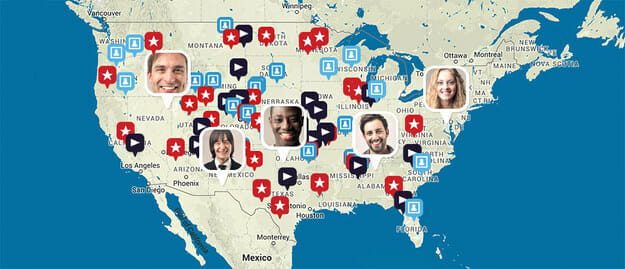Rand Paul may be a libertarian who would cut many government programs that nonprofits–and the people we serve–depend on. But there’s one important lesson he can teach us: what NOT to do.
Don’t Try to Fool the People
Sen. Paul announced his campaign for the presidency of the U.S. last week. His website displayed the map above with the heading “Endorse Rand Paul for President.”
But if you thought the faces represented people who endorsed Rand Paul, you’d be wrong. All these are stock photos from the files of a German photographer. None of them could vote for Paul, even if they wanted to!
What can nonprofits learn from Rand Paul?
The lesson here is not to avoid stock photos. Sometimes, they’re your best option. The lesson is: think carefully about what you’re saying to your supporters. Make sure it’s completely true.
Avoid:
- Making claims you aren’t in a position to know for certain
- Fudging your figures
- Giving misleading impressions (like bragging that your overhead is low, as if that were any indication of results!)
Instead:
- Tell real stories about actual people
- Collect data that mean something–and report the bad with the good
- Show how you’re making a difference, even in a small way, and even as one organization among many. Your real impact is enough.
Oh, and start taking photos of your work. Because sometimes stock photos can get you into trouble. Just look at Rand Paul.


